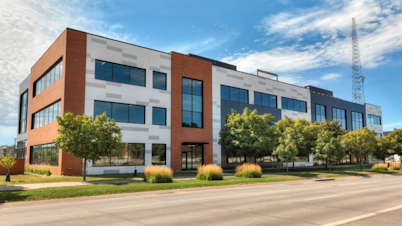
California Title 24 and Occupancy-Based Zone Control
New Opportunities for Occupancy-Based Control
California Title 24 — the state’s ruling energy code for commercial and residential buildings — published its latest code update last year and went into effect this month, affecting all developers and facility managers with upcoming new builds and retrofits. In our first blog post on this topic, we covered the 2022 Title 24 HVAC compliance change requiring working economizers on all single-zone units above three tons. For more information on why that code change may present a challenge for some, and how to successfully address it, visit that post here.
This week, we’re covering a compliance requirement that Title 24 has enforced for some time that could become more nuanced with global events furthering our understanding of air quality, dynamic occupancy, and efficiency. Since previous code cycles, facility managers must incorporate occupancy sensors in commercial buildings to enable forced setback modes when no people are detected during scheduled occupied hours. This means when employees in an office leave early on a Friday afternoon, the unoccupied zones should roll back heating or cooling after about 20 minutes or more of no detectable human presence.
After the COVID-19 pandemic fundamentally shifted the commercial buildings landscape, however, building operators have the opportunity to add granular sophistication to this regulation with ease and affordability. In addition to automatically enforcing setback modes in empty zones during occupied hours, building operators can set their control systems to achieve the opposite: When occupancy is detected in a zone during a building’s scheduled unoccupied hours, the HVAC system will kick into gear. This assures optimal air qualityvia adequate ventilation and standard comfort levels for buildings with shifting occupancy such as hotels, multi-family complexes, offices with flexible remote or in-office working policies, or overnight cleaning crews.
Before we dive into the mechanics of adding this new facet to the existing regulation, let’s review setback modes, preconditioning, and what they do for a building’s energy efficiency, comfort, and air quality levels.
Setback Modes & Leveraging Occupant Movement
The American Society for Heating, Refrigerating, and Air-conditioning Engineers (ASHRAE) has published numerous standards for the most healthy, productive conditions buildings should meet when people are living or working in them. CO2 levels should remain under 1,000 ppm, ideal humidity ranges between 30 and 60 percent, and so on. Maintaining those conditions 24/7 is wasteful and unnecessary, which is where building setbacks come in.
What is a building setback? This scheduling feature comes with certain types of thermostats or as part of a building automation system (BAS). Facility managers use it to set a building’s desired conditions when people are occupying the building, define typical occupancy hours — 8 a.m. to 5 p.m., Monday through Friday, for example — and then define less stringent building conditions for all those hours in between occupied times. This way, the building can save energy by expending less HVAC energy when no one is around, but without jeopardizing equipment health by turning systems completely off during hot or cold weather conditions. And, to ensure building conditions are up to setpoint when occupants arrive, facility managers can set a preconditioning sequence one hour before occupied hours begin.
Over time, the basic setback mode became more dynamic and effective. With occupancy sensing, setback modes can go into effect any time there are no people — there is no need to condition that conference room all Tuesday long if no one is going to be there. This is particularly effective in a hotel setting, where guests’ comings and goings are reliable only to the extent that they’ll probably be sleeping in their room.
With the right system, building operators can easily and affordably comply not just with this California Title 24 HVAC requirement, but take it a step further to achieve a truly dynamic building that works in both directions as occupancy fluctuates. By doing this, a building can condition spaces appropriately when occupancy is detected during scheduled unoccupied hours.
However, integrating effective occupancy sensing can be complicated and expensive in a traditional BAS, making occupancy-driven setbacks and conditioning tough to achieve. Here’s how an IoT-based BAS can make dynamic setbacks, forced occupied modes, and smart preconditioning a reality with minimal complexity and cost to building operators.
Using IoT-Enabled Hardware to Meet Title 24 Requirements
In a traditional BAS, facility managers typically need to piecemeal multiple components together to adhere to Title 24’s setback policies.
The 75F® HyperStat™, a cloud-based thermostat, humidistat, and IAQ sensing station, solves this Title 24 conundrum by delivering multiple sophisticated HVAC control functions in one affordable device. With the HyperStat, building operators can track temperature, humidity, light, sound, volatile organic compounds (VOCs), CO₂, particulate matter, and — you guessed it — occupancy. The HyperStat tracks this data every 60 seconds, and building operators can see it in real time through 75F's user portal, Facilisight. Adhering to the Title 24 HVAC requirement for automatic setback and conditioning modes based on occupancy is as easy as toggling Auto Away and Auto Force Occupy modes within Facilisight.
Enabling these features will automatically deploy a setback mode when no occupancy is detected in a certain zone during occupied hours and bring zones to setpoint when occupancy is detected outside scheduled occupied hours.
Additionally, the HyperStat has door, window, and keycard sensing capabilities that further granularize zone conditioning. Door and window sensing allows zones to react to any open windows and doors that may be impacting conditions indoors, and keycard sensing enables hotels to heat and cool rooms based on guest presence.
The HyperStat achieves these features best in single-zone settings. For multi-zone applications, the 75F Multi Sensordelivers the same Auto Away and Auto Force Occupy features with modified sequences. An all-in-one wall sensor that collects temperature, humidity, occupancy, and CO₂, the Multi Sensor augments the 75F® Smart Node™zone controller to influence equipment control and deliver easy Title 24 compliance.












